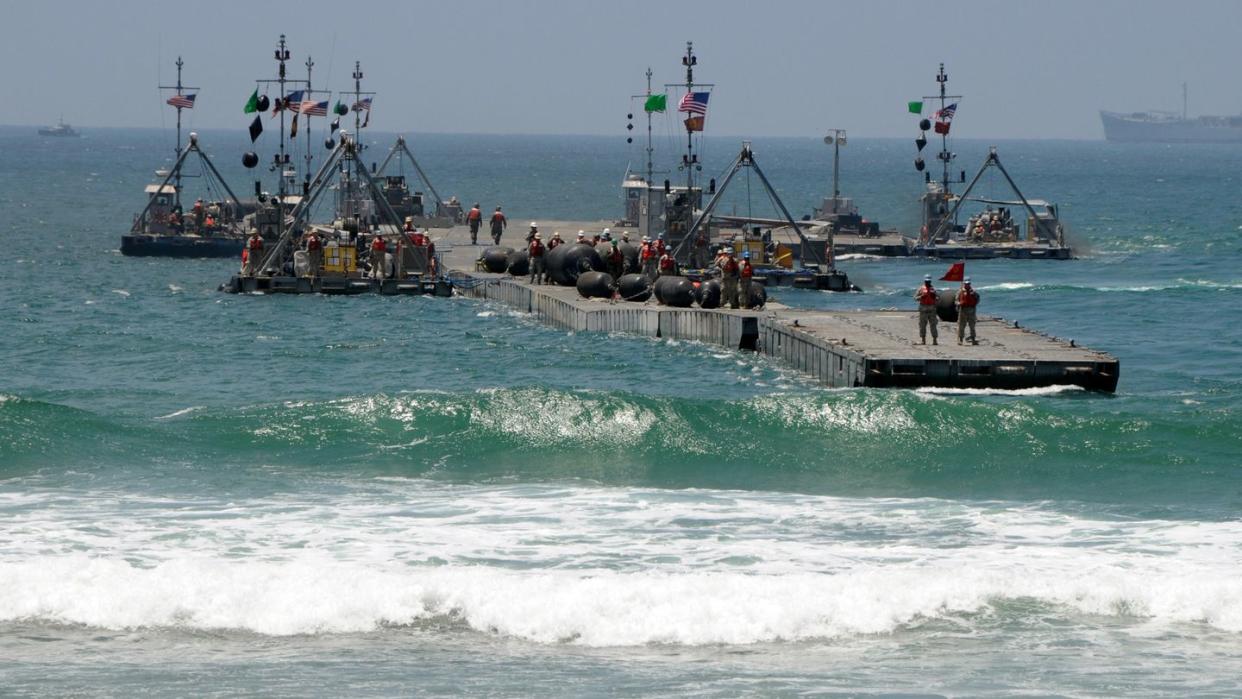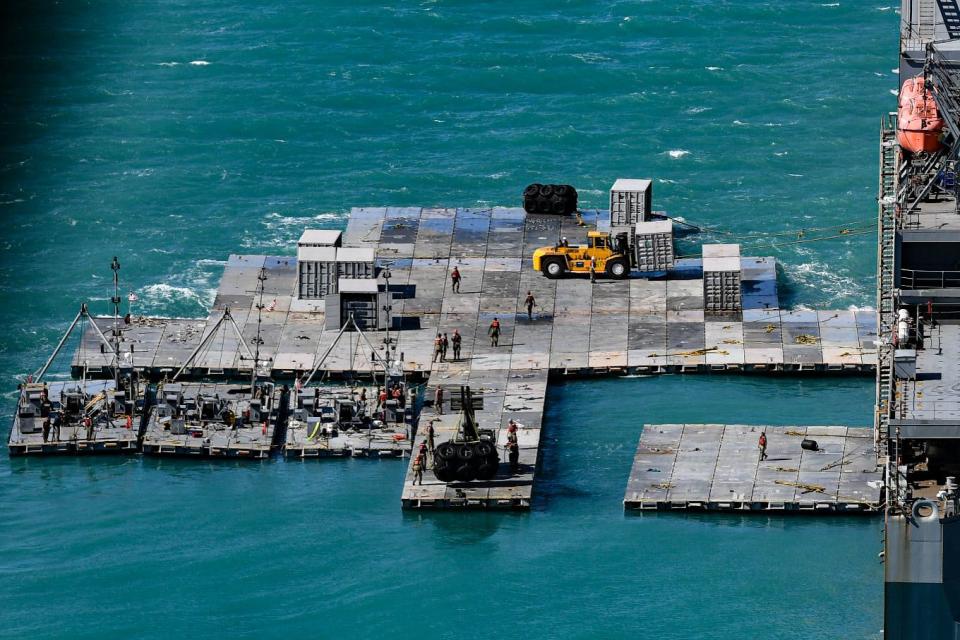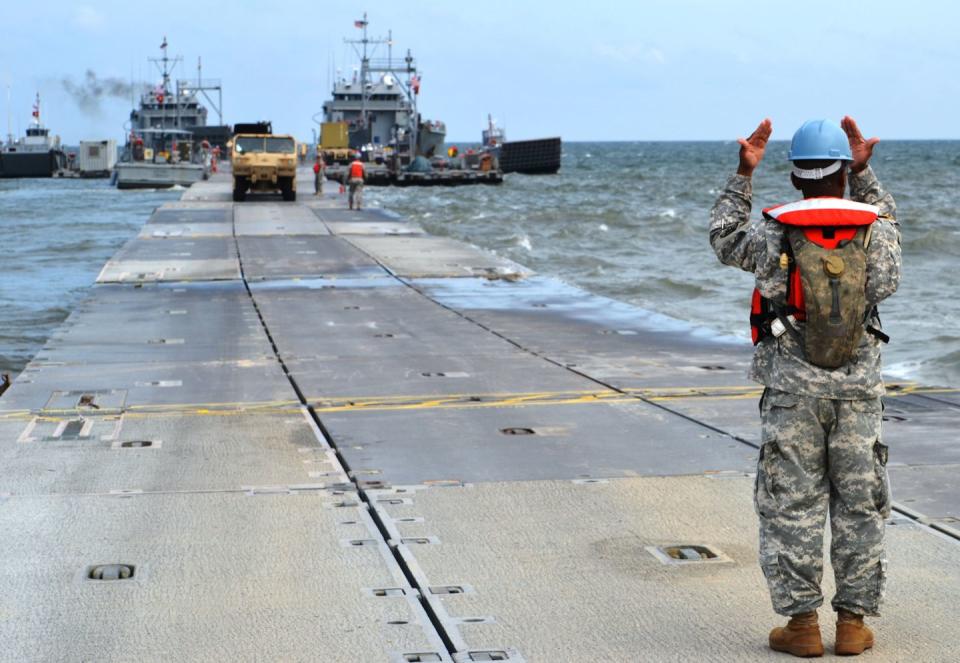The Army—Yes, the Army—Is Sailing a Fleet to Build a Port Off Gaza

Several U.S. Army ships have set sail for the Eastern Mediterranean in support of a relief mission.
The Frank Besson will set up a pier off the coast of Gaza to help provide civilians with humanitarian aid.
The ships are part of a little known Army capability, called Joint Logistics Over The Shore.
A fleet of Army ships from the 7th Transportation Brigade will establish a pier off the coast of Gaza, allowing ships to send food, medical supplies, and other aid to civilians living in the embattled area. As unusual as it sounds, the U.S. Army has ships and mariners prepared to facilitate the flow of equipment and supplies from ships to shore. The capability is meant to allow U.S. tanks and armored vehicles to come ashore where there are no ports.
Army Anchors Aweigh
“The Imperial March” plays over the loudspeaker of a US Army vessel departing on a mission to construct a temporary port for aid deliveries to Gaza pic.twitter.com/hBio42Uewa
— W.G. Dunlop (@wgdunlop) March 12, 2024
On Thursday, March 7th, during his annual State of the Union address, President Joe Biden ordered the Pentagon to begin a humanitarian aid effort directed at civilians in Gaza. On Saturday, just 36 hours after the order was given the first ship, USAV General Frank S. Besson departed Fort Eustis, Virginia. On March 12th, four more ships departed Eustis—the Monterrey, Matamoros, SP4 James A. Loux, and Wilson Wharf.
According to USNI News, the Navy is also sending Naval Beach Group 1 and the M/V Benavidez—a roll-on, roll-off transport ship that will carry floating pier modules. Altogether, the effort will involve about 1,000 U.S. military personnel, including 500 soldiers from the 7th Brigade.
The distance from Virginia to Gaza is approximately 6,000 miles, and the Army ships are not exactly fast, with a maximum average speed of about 12 knots. It will take about 25 days for the flotilla to reach Gaza.
Destination Gaza

The Army/Navy task force is tasked with building a 1,800 foot long floating pier from the waters of the Eastern Mediterranean to shore. Exactly where the Army will build the pier right now is an open question, as President Biden stated the military would not enter Israel. The Israeli military currently controls much of Gaza’s coastline. Pentagon planners have likely ruled out areas not controlled by Israel, which would be (by default) controlled by Hamas.
Once the issue is settled, the 7th Brigade will set about constructing what the Army calls a Trident Pier. A Trident Pier consists of several floating sections that are attached to one another and secured in place with anchors. The pier forms both a port for ships to anchor and a drivable road to shore. This allows ground vehicles such as tanks, Bradley fighting vehicles, and trucks to drive directly off a ship like the Benavidez onto the pier, and from the pier to shore.
In the case of Gaza, ships laden with supplies will dock at the Trident Pier and load supplies directly onto aid trucks. According to the Army, once completed, the pier will be able to facilitate the transfer of up to two million humanitarian meals a day. Due to the level of violence in the area and the possibility of attack, U.S. military personnel will not be allowed to go ashore. The pier should be operational within 60 days of the President giving the order.
JLOTS

The 7th Transportation Brigade belongs to XVIII Airborne Corps, the Army’s worldwide crisis response force. In the event of war, the Corps needs the ability to seize or build logistics assets to facilitate the flow of more troops, more equipment, and more supplies. The 82nd Airborne Division is available to seize airfields, while the U.S. Marine Corps would likely be tasked with seizing enemy ports.
In the event there are no ports, the 7th Brigade would be tasked to build them. This is called Joint Logistics Over The Shore (JLOTS) in Pentagon-speak—the ability to form a ship-ready pier where there is none.
The Army frequently deploys JLOTS overseas on training exercises—in South Korea in 2015 and 2017, Kuwait and the UAE in 2020, and Australia in 2023 for Exercise Talisman Sabre. This mission won’t be the first use of a Trident Pier for humanitarian assistance, either. In 2010, after the devastating earthquake in Haiti, JLOTS was used to build a temporary pier to handle the flow of international aid to the island country.
You Might Also Like

